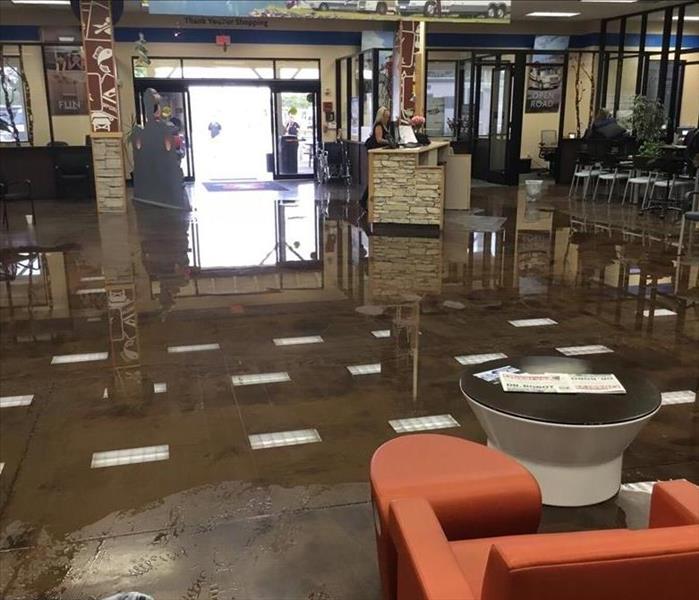Everything You Need to Know About Storm Surges
1/8/2024 (Permalink)
 A storm surge is a rapid and abnormal rise in sea level that occurs during tropical storms, hurricanes, or intense weather systems.
A storm surge is a rapid and abnormal rise in sea level that occurs during tropical storms, hurricanes, or intense weather systems.
Storm surges, often an underestimated threat during severe weather events, pose significant risks to coastal areas and can cause extensive damage to properties and communities. Continue reading to better understand, prepare for, and stay safe during storm surges.
What is a Storm Surge?
A storm surge is a rapid and abnormal rise in sea level that occurs during tropical storms, hurricanes, or intense weather systems. It is primarily caused by strong onshore winds and low atmospheric pressure, leading to an accumulation of water that moves inland, flooding coastal areas.
Understanding the Impact:
Storm surges can result in catastrophic flooding, causing immense destruction to homes, infrastructure, and natural habitats. The severity of a storm surge depends on various factors such as the intensity and size of the storm, the angle of approach to the coastline, and the shape of the coastline itself.
Key Factors Contributing to Storm Surge Severity:
- Wind Speed and Direction: Strong winds from a storm push water toward the coast.
- Low Pressure: A drop in atmospheric pressure can cause the water level to rise.
- Forward Speed of the Storm: Faster-moving storms can produce higher storm surges.
- Shape of the Coastline and Bathymetry: Coastal features and ocean floor contours affect surge height and reach.
Safety Measures and Preparedness Tips
Stay Informed: Keep track of weather updates, storm surge warnings, and evacuation orders issued by local authorities. Utilize weather apps, radio, or NOAA (National Oceanic and Atmospheric Administration) alerts for reliable information.
Evacuation Planning: If residing in a coastal area prone to storm surges, have an evacuation plan in place. Know your evacuation routes and shelters. Plan ahead and evacuate early if advised to do so.
Secure Your Property: Before to the storm, secure outdoor furniture, board up windows, and reinforce doors to minimize potential damage to your home.
Emergency Kit: Prepare an emergency kit with essentials such as water, non-perishable food, medications, important documents, flashlights, and batteries.
Storm surges are formidable and potentially life-threatening aspects of severe weather. Understanding their nature, preparing adequately, and heeding evacuation warnings are crucial for safeguarding lives and property. SERVPRO of Cape Coral stands ready to assist communities in storm-related restoration and recovery efforts.
For expert storm damage restoration services or further guidance on storm surge preparedness, contact our SERVPRO® team today. Stay informed, stay safe, and let us help you navigate through storm surge challenges.




 24/7 Emergency Service
24/7 Emergency Service